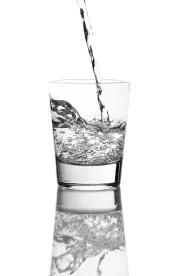Two significant Science Advisory Board (SAB) meetings take place this week, both of which deal with SAB PFAS recommendations for proposed EPA action for the chemical class. On July 18, the SAB met to discuss final recommendations with respect to the EPA’s Draft Fifth Contaminant Candidate List (CCL 5) for drinking water pollutants, which included PFAS as a class. On July 20, the SAB will meet again to finalize its report regarding the EPA’s scientific support for setting enforceable drinking water limits for certain PFAS.
Given the significance that the SAB reports carry to companies with current or legacy use issues with respect to PFAS, it is critical that companies closely follow these issues, as they will shape future EPA regulatory action for years to come.
SAB CCL 5 Report
On July 31, 2021, the EPA announced in its draft CCL 5 that it would consider regulating PFAS as an entire class. The CCL is a list of contaminants that are currently not subject to any proposed or promulgated national primary drinking water regulations, but are known or anticipated to occur in public water systems. Contaminants listed on the CCL may require future regulation under the Safe Drinking Water Act (SDWA). Simply because PFAS are listed on the CCL 5 does not guarantee that regulation will occur; however, it does open doors to research that are not otherwise available without the listing on the CCL.
The EPA PFAS action is not the only step the agency has taken with respect to PFAS and drinking water, but developing the CCL is one of the foundational steps under the Safe Drinking Water Act (SDWA) in order for the EPA to potentially regulate drinking water contaminants. SDWA requires EPA to publish a list of currently unregulated contaminants that are known or anticipated to occur in public water systems and that may require regulation. EPA must publish a CCL every five years. The CCL does not create or impose regulatory burden on public water systems or state, local, or Tribal governments. EPA has completed four rounds of CCLs since 1996. The last cycle of CCL, CCL 4, was published in November 2016. EPA began the development of the CCL 5 in 2018 by asking the public to nominate chemicals, microbes, or other materials for consideration for the CCL 5.
SAB PFAS Recommendations
On April 1, 2022, the SAB PFAS report was released in its draft report form summarizing its findings after the hearings and a thorough review of the scientific literature provided by the EPA. During a May 3, 2022 public hearing, the SAB discussed its draft report, made edits, and signaled its intent to send a final report to the EPA in the near future.
While the SAB PFAS findings support many of the EPA’s proposed conclusions, most notably a finding that PFOA constitutes a “likely carcinogen”, the draft reports also echoed many of the comments from the SAB in the series of hearings, including lack of transparency, flawed data, inconsistent methodologies, and potentially unsound scientific foundations for some conclusions. Once the SAB’s report is finalized, the EPA will use the information in the report to further its goal of setting National Drinking Water Standards for PFAS by fall 2022.
PFAS Drinking Water Standards: Impacts on Businesses
Many states have stepped in and created enforceable limits for PFAS in drinking water. The permissible levels range widely, generally within the 5 parts per trillion (ppt) to 70 ppt range. Many have argued that when the EPA sets a a PFAS National Primary Drinking Water Regulation, it will fall somewhere near the midpoint in this range. However, the data submitted regarding PFOA and PFOS, particularly the “likely carcinogen” categorization for PFOA, suggests that the EPA’s regulation for PFOA and PFOS may fall well below the 30-40ppt range that many felt was a reasonable estimate. Some believe that a classification as a “likely carcinogen” or simply a “carcinogen” will mean that the MGL will be set at 0ppt.
In states that currently have PFAS drinking water standards in place, businesses have seen an uptick in enforcement actions related to PFAS remediation costs. If the EPA were to set significantly lower PFAS drinking water standards than initially predicted, it will naturally mean that the EPA will have a broader pool of alleged polluters to choose from for pursuing PFAS remediation costs. Depending on the scope of the PFAS pollution issue, cleanup costs can range anywhere from a few hundred thousand dollars to millions of dollars.
Conclusion
Now more than ever, the EPA is clearly on a path to regulate PFAS contamination in the country’s water, land and air. The SAB PFAS recommendations are a clear indictor of this. The EPA has also for the first time publicly stated when they expect such regulations to be enacted. These regulations will require states to act, as well (and some states may still enact stronger regulations than the EPA). Both the federal and the state level regulations will impact businesses and industries of many kinds, even if their contribution to drinking water contamination issues may seem on the surface to be de minimus. In states that already have PFAS drinking water standards enacted, businesses and property owners have already seen local environmental agencies scrutinize possible sources of PFAS pollution much more closely than ever before, which has resulted in unexpected costs. Beyond drinking water, though, the EPA PFAS plan shows the EPA’s desire to take regulatory action well beyond just drinking water, and companies absolutely must begin preparing now for regulatory actions that will have significant financial impacts down the road.




 />i
/>i

